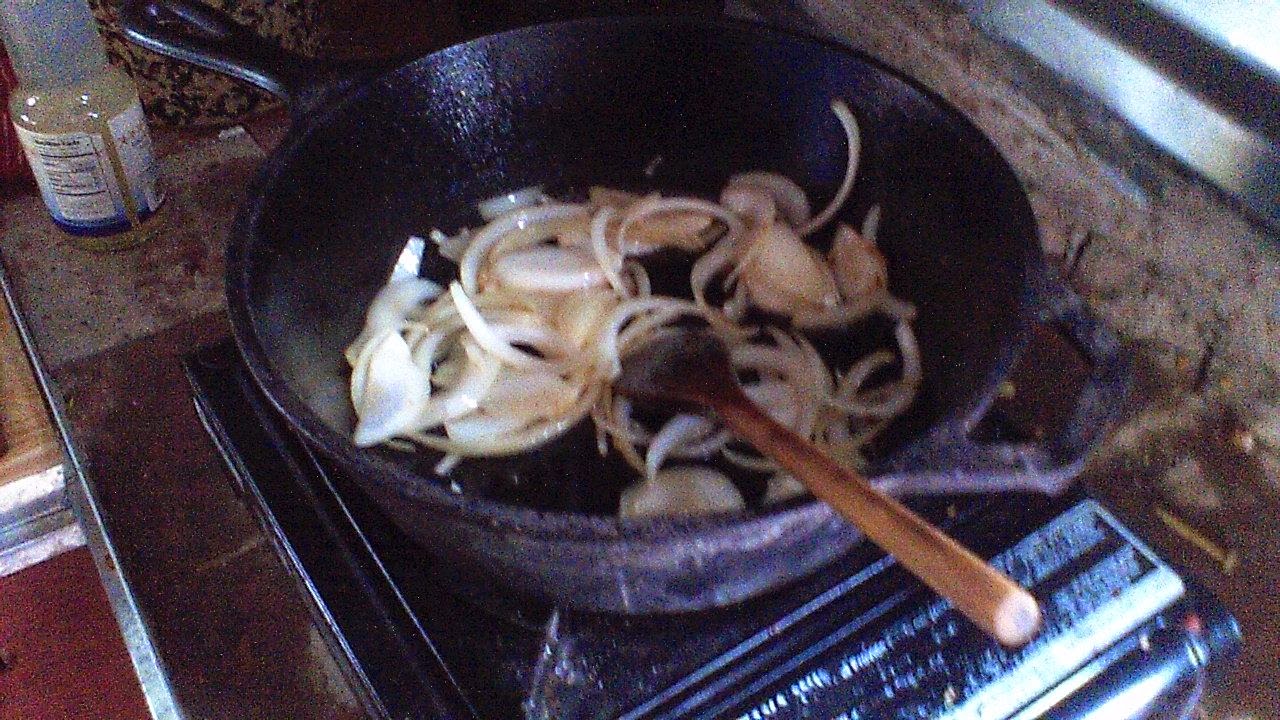COOKING WITH A MALAYSIAN FLAIR
Ooops! I guess we’ve simply been so busy living our lives here on the Empire to post about what we’ve been eating; and of course we have been eating, and eating well i might add. The addition of our Butterfly kerosene cook top has been a real plus. I still like our little butane stove top, however as the temperatures fell below 50 degrees we discovered that sadly its performance fell way off. The pressurized gas stoves, just like Mungo, don’t like the cold weather. Mungo’s research on alternatives led us in two directions; one, alcohol and two, kerosene. We dismissed the alcohol almost immediately because in Maryland you can’t get the high test stuff due to a relatively new law that forbids the sale of pure alcohol (can’t have irresponsible people drinking it) unless it has a methyl additive, which creates nasty fumes. Besides it doesn’t put out the BTUs. This led us to Kerosene, the fuel of choice for most of Asia, both for heating and cooking.
Speaking of Asia: i spent the last week re-reading one of my favorite cookbooks; one of only four i allowed myself onboard, ‘The Cradle of Flavor’, by James Oseland. This book is a lovingly written survey of home cooking from the Spice Islands. If any of you are interested in learning about the food and cooking of Indonesia, Malaysia and the other islands this could be the book for you. He includes a thorough explanation of ingredients and methods complete with approximate locations in the store as well as possible spelling variations by ingredient. Awesome job!
So last night we had a beautiful fish and greens dish for dinner. Don’t try to find the recipe in the book, it’s not there. I am an intuitive cook and an unabashed experimenter. It bothers me not at all to alter recipes i have never tried before. Recipes after all are for the most part guidelines, not mandatory rules. Well, except for baking, i usually pay attention when i am making sweets. Anyhow there are a couple of basics to keep in mind when you are cooking Spice Islands style: 1. keep a balance between sweet, salty, sour and hot and 2. Virtually all of your flavoring happens upfront. Almost all of the recipes start with a flavoring paste and go on from there. This is an important difference between this style of cooking and most others, particularly western styles. Most of the aromatics are ground together to form a paste that ranges in texture from salsa crude and mashed potatoes; the paste is than gently saluted in oil util the air in the galley is perfumed with the heavenly aromas of chiles, shallots, ginger, nutmeg and whatever else you’ve used. Unlike western cooking after the flavoring paste the ingredient list is simple; usually only one two ingredients per dish, all the better to showcase the flavors. Another important difference is the temperature that the food is served, warm, not hot, straight out of the and. A typical dish should be allowed to rest anywhere from ten to thirty minutes. This brings all of the flavors together and allows you to taste the incredibly delicious layers of spices. The rice of course is served piping hot. So, last nights dinner, pictured here is a hybrid dish featuring kale with garlic and chilies (greens are served at just about every meal) partnered with a mild white fish, Basa in this case, with a delicious range of spices, nutmeg, lemongrass, turmeric, shallots, and coriander. i served this with a lovely cucumber pickle.
Yum yum!
more later,
Morgaine























































